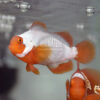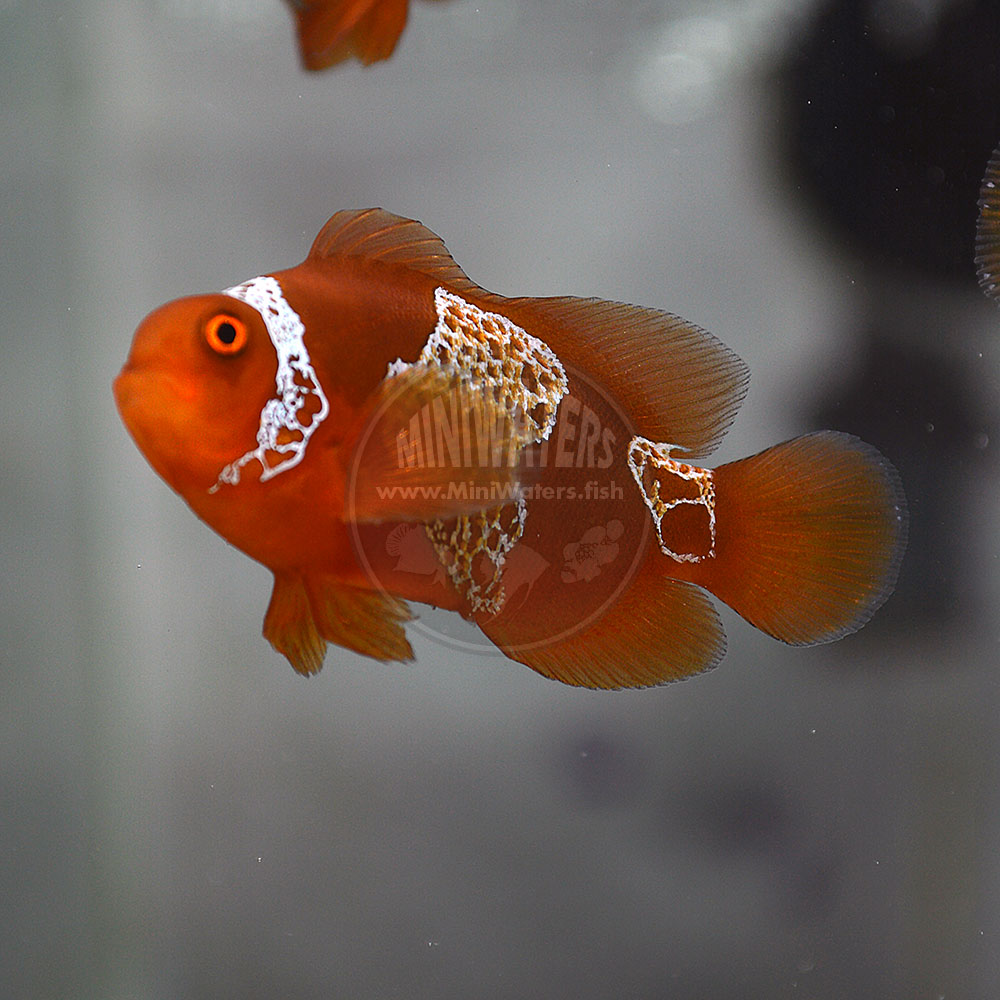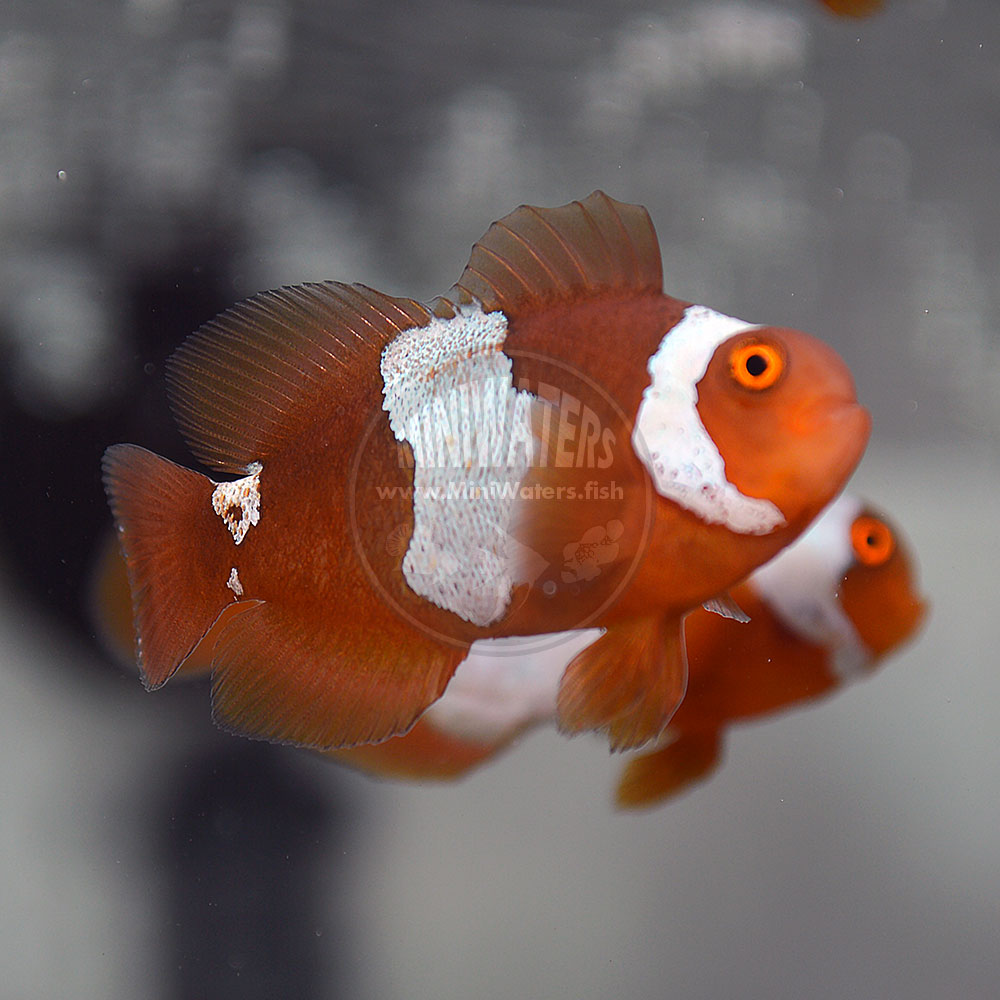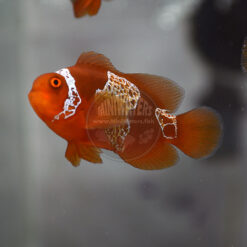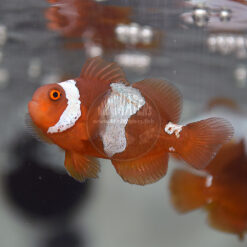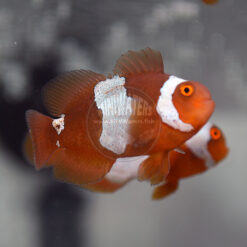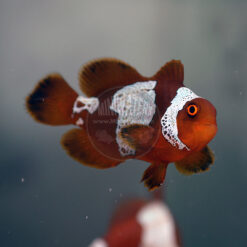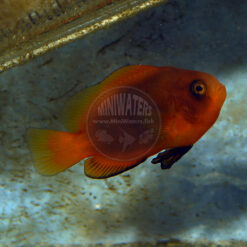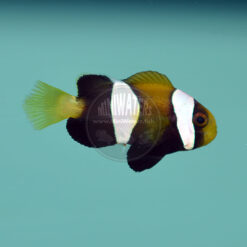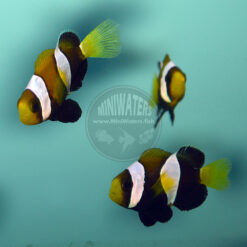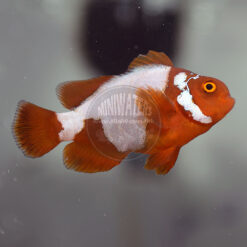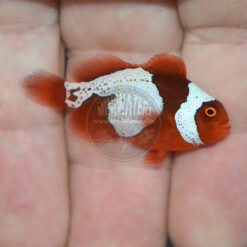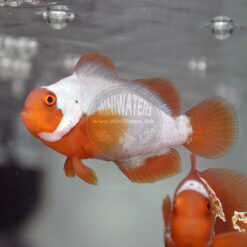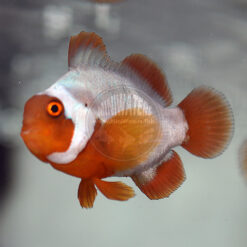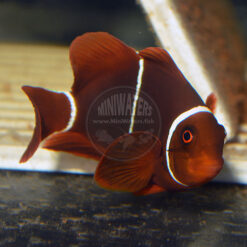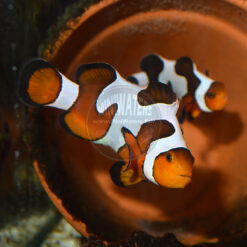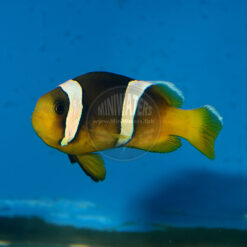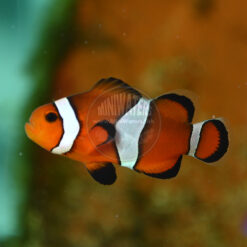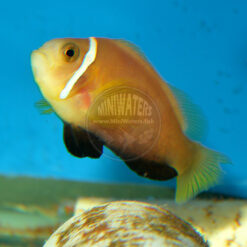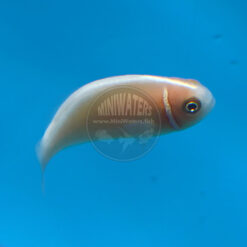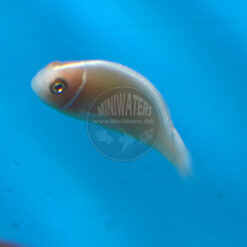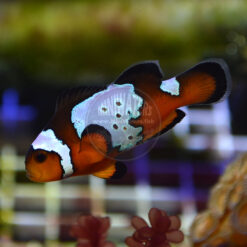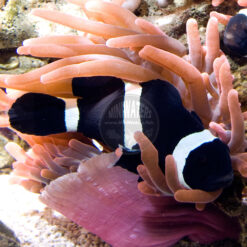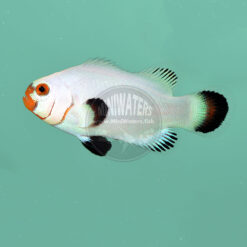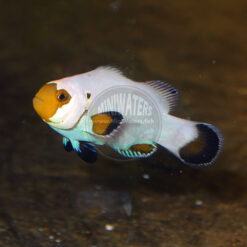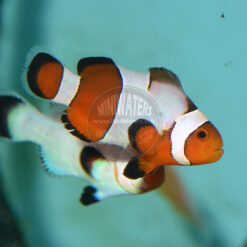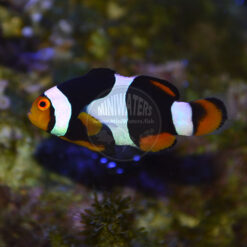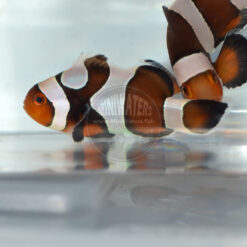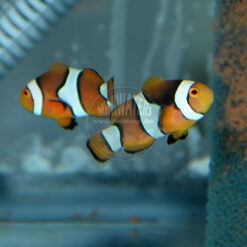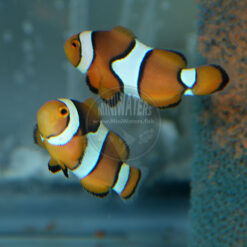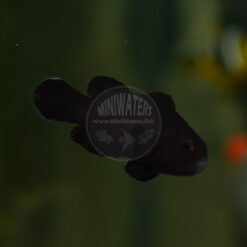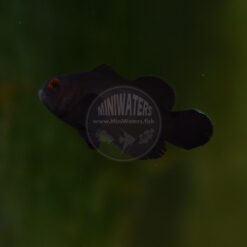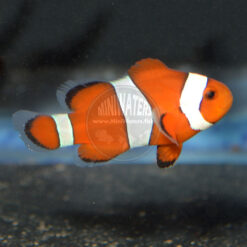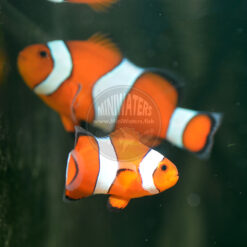Premnas biaculeatus “Lightning Maroon” Clownfish, Standard Grade
$299.00 – $399.00Price range: $299.00 through $399.00
Standard grade Lightning Maroon Clownfish generally have less than 50% white coverage, no connected bars, and may show little in the way of patterning at a young age. On standard catalog offerings of Lightning Maroons, a random selection from available stock in the ordered grade is what is sent. For purchases of multiple fish, I will attempt to select a range of patterning levels within the grade ordered, as possible. Watch for WYSIWYG offerings if you want to select the “exact” fish so you are not in any way disappointed.
Learn more about Lightning Maroon Clownfish below
Description
Standard grade Lightning Maroon Clownfish generally have less than 50% white coverage, no connected bars, and may show little in the way of patterning at a young age.
You’re probably new to the marine aquarium hobby if you’ve not yet heard of the Lightning Maroon Clownfish. But what you might not know is that MiniWaters, and Matt Pedersen, working with SEASMART, Pacific Aqua Farms, and Blue Zoo Aquatics, ultimately brought the Lightning Maroon into cultivation from a single wild aberrant fish collected in PNG by SEASMART diver Steven Paul. Arguably, MiniWaters is “the home of the Lightning Maroon”, and while I tend to not put a lot of stock into it, we routinely here that the fish we produce are somehow superior in terms of appearance. From where I sit, we don’t know why we raise more fish that have more white coverage; it could be something to do with how we rear, or it could have something to do with a second gene that’s not readily apparent. Ultimately, I believe there’s a Lightning Maroon for everyone; it’s more about finding the fish that looks right to you.
Lightning Maroon Clownfish carry at least one copy of the “Lightning Gene”, which at this time appears to be a standard dominant gene. That said, the jury is still out on where we go form where.
Pattern development in Lightning Maroon Clownfishes: All Lightning Maroon bars start out as solid white, but then break up and ‘pit’ as the fishes grow to reveal what starts as red pinprick spots. Gradually these spots get larger, and at some point the balance tips to there being more red than white in the stripes, at which point the Lightning Maroon displays its somewhat lacy pattern. This process occurs at different rates in each individual fish; no too are the same, and the Lightning Maroon is highly unique in the clownfish world as a “designer” fish that is always changing as it ages. Some juveniles will already show strong patterning in the stripes; we’ll call these the “instant gratification” fish. Others will arrive with what looks like solid bars. While the don’t show their pattern so young, I suspect they’ll keep the pattern longer as they age.
Special attention must be made when attempting to pair up PNG White Stripe Maroons; these truly are brutally mean to each other during pairing, often requiring repeated attempts and separations. Pairing is done at your own risk; simply buying two at placing them together is likely a recipe for disaster. Be prepared with breeder nets or Peace Maker boxes ( a great tool every aquarist should have).
On standard catalog offerings of Lightning Maroons, a random selection from available stock in the ordered grade is what is sent. For purchases of multiple fish, I will attempt to select a range of patterning levels within the grade ordered, as possible. Watch for WYSIWYG offerings if you want to select the “exact” fish so you are not in any way disappointed.
A Note On Conservation and Hybridization: I am a strong supporter and practitioner of conservation-minded breeding, which means MiniWaters.fish will only sell Lightning Maroons with known lineage which is is, to the best of our knowledge and ability, pure to PNG. It turns out not all white stripe Maroons are the same; at minimum there are two distinct populations, with those from PNG and the Solomons appearing very distinct when compared to others. MiniWaters is strongly opposed to the hybridization of the Lightning Maroon into the Gold Stripe Maroon (which I consider to be deserving of re-recognition as a valid species, Premnas epigrammata). These types of projects only serve to erode the differences between the WSM and GSM, and ultimately will pollute the gene pool of both species for future breeders, which also eliminates any conservation merit behind breeding these fishes and destroys the ability of the captive population to serve as a last chance repository for each species. So please, regardless of where you purchase your Lightning Maroons, absolutely make sure they are pure to PNG lineage if you care about the preservation of species in captivity. These hybrids are simply not needed.
This single fish was tracked over 2 years to show how the pattern of a Lightning Maroon Develops. Solid white bars today, as young fish, can turn into incredibly lacy and intricate patterns as the fish grow and mature. Your Lightning Maroon Clownfish will never look quite the same on every day of its life.
Additional information
| Scientifc Name | Premnas biaculeatus |
|---|---|
| Geographic Location | PNG |
| Captive-Bred | |
| FishBase Link | http://www.fishbase.se/summary/Premnas-biaculeatus.html |
| Wholesale Available | Yes |
Related products
Clownfish
Clownfish
Clownfish



